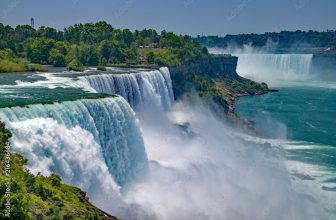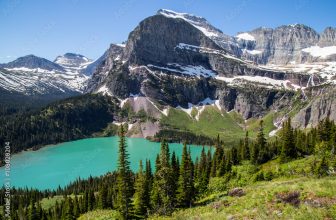
Traveling to Tokyo is not for the faint of heart. While the ultra-modern city erupts in mass traffic at all times, the city manages to hold on to a surprising amount of tradition. Despite being home to over 9 million people, the city retains a surprisingly low amount of traditional culture. Getting around the city is not easy and there are many hidden secrets to be discovered. Here are some of them. Read on to discover the most fascinating secrets of this amazing city.
Harajuku
One of Tokyo’s most colorful neighborhoods, Harajuku is home to vibrant street art and young fashion. Shoppers can browse the funky vintage clothing boutiques on Takeshita Street, or take a walk down Omotesando Avenue for a more traditional experience. The laneways surrounding Harajuku are dotted with small, trendy bars. There are also numerous dessert shops specializing in a wide range of sweets. The Watari Museum of Contemporary Art also hosts cutting-edge temporary exhibitions.
For those who love to shop, you can visit the many second-hand stores that dot the city. While the selection is limited, the prices are competitive, and you won’t regret buying something that’s slightly used. You’ll be surprised at how many good bargains you can find if you’re willing to take the time to look. Harajuku’s diverse mix of high-street fashion and history will delight any visitor.
A visit to Harajuku is a fun way to spend a day in the city, and you can also take a trip to Yoyogi Park, which is situated between Shibuya and Shinjuku. You’ll also find the Meiji-Jingu Shrine, which is next to the station and was built on the garden of Emperor Meiji. There’s a lot to do in this modern district of Tokyo.
Ueno Park
If you’re looking for a large, beautiful public park in Tait, Tokyo, then you’ve probably heard of Ueno Park. This vast park was created in 1873 on land formerly owned by the temple of Kan’ei-ji. Whether you’re looking to spend some time outdoors, get some exercise, or simply admire the Japanese culture, Ueno Park is the place for you.
In addition to the natural beauty of this area, there’s a zoo and museum there. You can see various Japanese animals and birds, as well as the iconic cherry trees. Even if you don’t visit the zoo, you can explore the surrounding area. There’s a ton of great street food and Japanese lanterns to enjoy during your visit to Ueno Park. A trip to Ueno Park is guaranteed to be an enjoyable experience.
In addition to the Japanese culture, Ueno Park offers some great hanami experiences. You can visit the cherry blossom festival, which typically occurs during late March and early April, where more than 800 sakura trees bloom. While Ueno Park is popular in the spring, it’s usually quieter in the summer and autumn. You’ll also be able to view beautiful lotus flowers in the summer.
Meiji Shrine
Meiji Shrine in Shibuya, Tokyo, is a Shinto shrine dedicated to the deified spirits of Emperor Meiji and his wife, Empress Shuken. Although the shrine is located in the city, the emperor’s grave is located south in the nearby Fushimi-momoyama shrine. Nevertheless, visitors are welcome to view both of their graves, as it is an important part of Japanese history.
The shrine is located near the Harajuku Station and is accessible by JR’s Yamanote Line. You can reach the shrine through one of its two entrances – the north entrance near JR’s Yoyogi Station, or the southern entrance near JR’s Harajuku Station. Both are a 10-minute walk away. If you’re visiting the shrine during daylight hours, you’ll be rewarded with a spectacular view of the city from the main building.
The shrine is surrounded by a forest, estimated to contain more than one hundred thousand trees, all donated by various regions of Japan. The shrine is situated in the middle of a peaceful forest, and the forest is a relaxing, calming environment. Visitors can purchase amulets, write wishes on ema (paper stubs), or make offerings. There’s something for everyone at Meiji Shrine, no matter what religion you are.
Nishiarai Daishi Temple
The large Buddhist temple complex is home to several gardens, ponds, and a seasonal display of wisteria and peonies. The serene atmosphere is the perfect place to spend some time and contemplate the world’s greatest enlightenment. After you’ve finished your meditation, you can enjoy a peaceful stroll through the temple grounds. In addition, you can take in the sights of the Tokyo Sky Tree, one of the tallest buildings in the city.
There are many spots to visit at Nishiarai Daishi Temple, including the 700 year old Wisteria tree. The temple’s main hall features a giant bell tower. It also includes a famous traditional cemetery and a souvenir street directly in front of the main gate. Another popular spot is the Peony Garden, which has a history dating back to the 16th century. Visitors can also enjoy the seasonal markets and festivals held nearby.
You can also visit Nishiarai Daishi Temple by bicycle. Tokyo has cycling facilities on every street. You can park your bike anywhere near the temple, but make sure to check if parking is allowed. If you do find that parking is prohibited, consider taking the train instead. You’ll also want to plan your sightseeing area around the temple. If you’re going for a cultural experience, the Nishiarai Daishi temple is a great option.
Kameido Shrine
Located in Kameido, Koto Ward, Tokyo, the Kameido Tenjin Shrine is a Japanese Tenman-gu shrine. The shrine is dedicated to 9th-century Japanese scholar Sugawara no Michizane. It is a popular destination for pilgrims, as the shrine is known to be especially beautiful. Visiting Kameido Tenjin Shrine is a great way to honor this revered figure.
The main shrine is surrounded by plum trees. Its roof is shaped like a samurai helmet and features gold fittings around the eaves. The shrine’s pond is famous for its large population of tortoises, but the turtles are not native to the area. Worshipers often release them in the pond to gain good fortune. However, the shrine does not encourage the practice, as they could harm the local turtle population.
The Kameido Tenjin Shrine, also known as Shitamachi no Tenjin-sama, is the most popular downtown Tenjin shrine in Japan. Its arched bridge is an architectural feature and makes it popular during the summer months. The shrine is also known for its annual plum blossom festival (Ume Matsuri), the Wisteria Festival (Fukusu Matsuri), and the Chrysanthemum Festival (Kiku Matsuri).
Shibuya
If you’re planning a visit to Tokyo, you should take a look at Shibuya, a special ward in the city. This cosmopolitan district is home to the two busiest railway stations in the world. The area is known as the “Silicon Valley” of Tokyo and is full of restaurants, bars, and shops. While the area is busy and hectic, it’s definitely worth a stop.
In the evenings, you can spend an evening at one of the many bars, clubs, and concert halls in the area. You can also check out Womb, an iconic electro club from Babel, and the famous Karaoke Kan, the setting of the movie Lost in Translation’s opening scene. And, if you’re looking for classic Japanese cuisine, Shibuya is a great place to go. You’ll find great ramen and sushi at Ichiran, or try wagyu beef at Han no Daidokoro.
The area’s iconic crosswalk is a major meeting point in the city. The traffic lights and glitzy neon create a surreal and highly organised atmosphere. Visitors can experience the heartbeat of Tokyo by meeting up with locals and taking part in dance competitions. While you’re in the area, don’t forget to visit Shibuya station and its nearby station, which offers a view of the city’s famous Shibuya crossing.
Shibuya district
The Shibuya district is the epicenter of mainstream youth culture, cuisine, and fashion in Tokyo. While many of these activities are geared towards the younger crowd, there are many things to do in Shibuya that are also enjoyed by older residents. Listed below are 18 things to do in Shibuya. Read on for more tips! We’ve included some of our favorite places to see and eat in the area.
One of the most iconic sights in the Shibuya district is the ‘Shibuya Crossing,’ a busy intersection highlighted by traffic lights. This is one of the most popular photo spots in Tokyo and is the place where many locals gather to take photos. Another great place to view the city is the Shibuya Bridge, which connects two parts of Shibuya Station. This bridge is the perfect place to snap some photos.
If you’re looking for some good shopping and nightlife in Shibuya, try Dogenzaka. This street is crammed with boutiques, restaurants, and izakaya. You can also catch some concerts at these venues. Shibuya 109 is also a popular shopping street, with plenty of hip shops and bars. There’s something for every taste and budget. And if you’re looking for some shopping, don’t miss out on Seibu, a 10 storey men’s and women’s department store.







